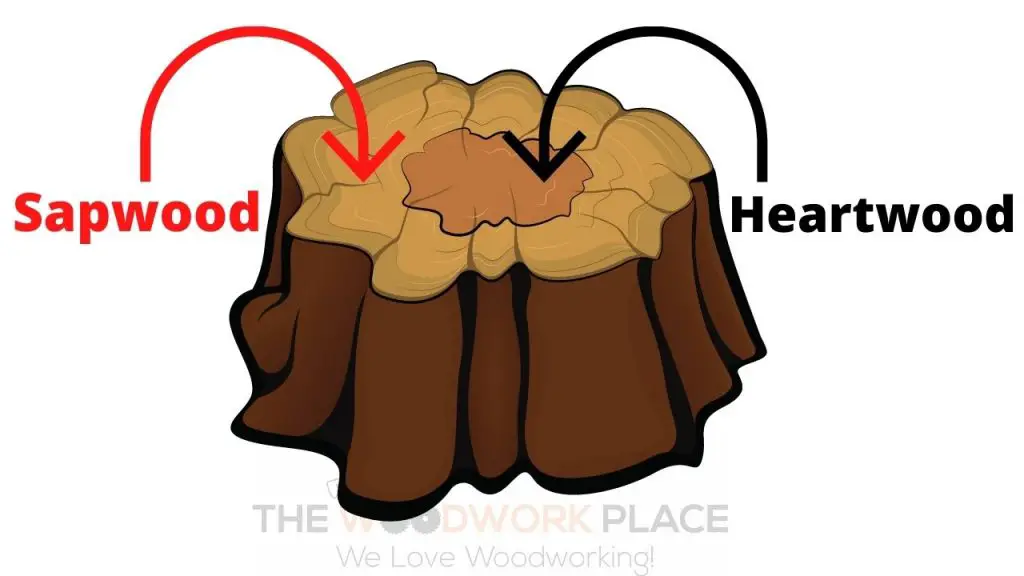Do you want to create an intricately designed wood carving?
Then, you need to think about whether the wood you’re carving is actually able to take on those intricate designs.
And this is something you need to seriously think about when it comes to working with Palm tree lumber. Why? Well, because the distinctive texture of it’s lumber can make Palm tree wood very difficult to carve.
So, in this post, you’ll learn what makes Palm tree lumber very different from typical wood. You’ll also learn why Palm tree woods uniquely textured center can make this wood tricky to work with.
And keep reading to find out what type of carving style Palm tree wood is best suited for.

This post may contain affiliate links to products that we receive a commission for (at no additional cost to you). Learn more here.
What Is The Best Wood For Woodcarving?
The answer to this depends on your wood carving style.
Some carving styles use hand tools and require a light touch. So, these carving techniques require low density soft pliable woods.
On the other hand, there are some carving styles that need a heavier hand — and in some cases even require power tools. So tougher wood types are more suited for these styles.
Related Post: 9 Easy Whittling Projects For Beginners (That You Can Make This Weekend)
OK…So What Types Of Wood Are Best For Different Carving Techniques?
When it comes to light touch carving — that use hand tools — you should use pliable woods.
So for whittling, Basswood and White Pine are good choices, because these two timbers don’t require a lot of force to cut. And, these wood types also hold designs rather well too.
For styles that require a bit more force, (like as Chip Carving), lumber such as Black Walnut and Cherry are ideal.
But, when it comes to intense carving styles — of the kind that require power tools — you need very tough timber. So, for styles like Chainsaw Carving, you need to use a tough wood like European Oak (a.k.a White Oak).
Related Post: Is Oak Wood A Good Choice For Chainsaw Carving?
And What Type Of Carving Style Is Palm Tree Wood Suited For?
Well, one of the first things you need to know about a woods suitability for a carving style, is its toughness.
Very soft woods are great for delicate precise cut carving. While heavy hard timbers are not.
And one of the ways that we measure the hardness of wood, is by checking its Janka rating.
That Janka rating measures how much force it takes to make a dent in a piece of wood. The higher the Janka rating, the more force it takes. And the more force it takes, then the harder the timber.
Now, when it comes to power tool carving styles such as Chainsaw Carving, White Oak is a great choice wood for this particular technique.
White Oak has a Janka rating of 1290 lbf. That means it will take 1290 pounds of force to make a dent in this tough durable lumber.
But, when we compare that against Palm trees, Palm trees tend to be much harder than Oak.
You see, the Coconut Palm tree, (of the kind you might see growing around parts of Hawaii), has a Janka rating of 1600 lbf. While the Black Palm Tree (native to South and Central America) has a tremendous Janka rating of 2020 lbf.
Related Post: 11 Surprisingly Simple Wood Carving Projects for Absolute Beginners
So Does That Mean Palm Tree Wood Is Tough Enough For Chip Carving?
Here is where things get a little tricky. You see, the texture of palm trees is very different from typical wood.
In fact, the stem of palm trees aren’t exactly wood. This is why this tree isn’t even classified as a softwood or hardwood.
And why is that? Well, it all comes done to the fibrous texture at the very heart of this trees stem.
And What Makes Palm Tree Wood Different From Regular Wood?
Palm tree wood has a sponge-like fibrous center at it’s ‘heartwood’.
This is very different to the heartwood of regular wood, where the heartwood of regular trees are the most dense part of that tree stem.

In an inverse to typical wood, the outer ‘sapwood’ of palm trees is much denser than its inner ‘heartwood’ center. And it is that sponge-like texture at its center that makes Palm trunks tricky to carve.
And, once you cut deep beyond the outer section of Palm tree trunks, that fibrous center will start to collapse in on itself.
Can’t I Try Carving This Wood Anyway?
Sure you can! In fact, green Palm tree wood is surprisingly malleable.
Green wood is any wood that has been freshly cut from a tree. At this stage, the wood still has a lot of moisture in it. And this makes green Palm tree lumber more pliable.
Once it dries out, however, it becomes very hard, certainly much too hard for whittling.
Still, this tree can be Chainsaw carved. In fact, palm tree trunks are famously used to make chainsaw carved Tiki statues.

But, you will need to carefully stay focused on carving just the outer most dense section of Palm trunks. If you do that, then it’ll hold that carved design well.
To Wrap Up, Here Are The 3 Key Takeaways From This Post…
- 1). Palm trees have a fibrous center that is much less dense than the outer section of this trees trunk.
- 2). That sponge-like fibrous center is very difficult to work with or carve.
- 3). Palm tree trunks are famously used to create chainsaw-carved Tiki statues.



